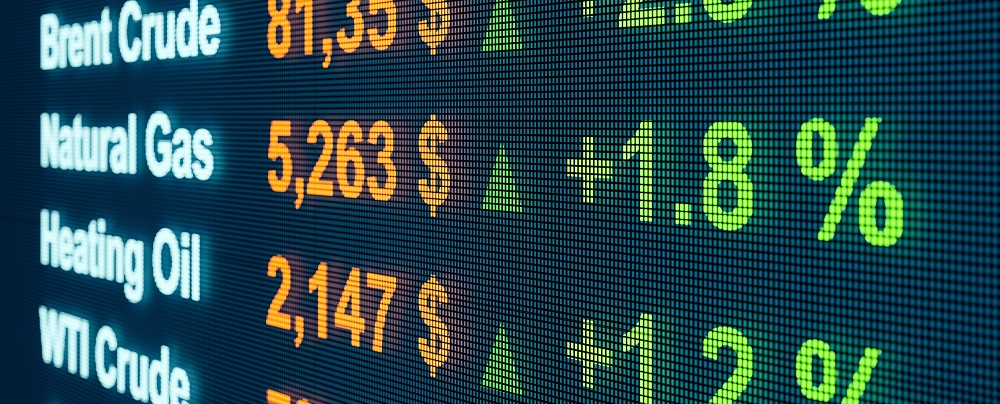The Rising Price of Energy: Explained

The talk these days is all about supply, demand and cost. With holidays on the way, people are concerned about getting what they need when they need it. The same is true for businesses that need reasonably priced energy to run their operations, heat facilities and get their products and services to market. This winter’s demand for energy is beating out supply and sending prices skyward. Why is it happening and what can your business do about it?
Why is Energy Demand High?
When the pandemic arrived early in 2020, businesses suddenly closed and employees were sent home. As a result, the demand for energy shrank, causing prices to fall. Because natural gas is also used to generate electricity, those prices declined, too, and the U.S. experienced some of the lowest energy prices in decades.
In the world of energy procurement, this situation is referred to as “demand destruction,” and much of it happened in the commercial and industrial sectors. The supply and demand equilibrium went out of whack as the U.S. and other countries decreased their typical usage patterns. This caused gas supply to vastly outpace demand, and prices dropped precipitously to record lows. By June 2020 natural gas prices were as little as $1.66/MMBtu.
As the U.S. recovers economically, slowed businesses are springing back to life along with an increased demand for energy. As demand grows, so do energy prices, because supply has been slow to come back to match the increased level of demand.

4 Factors in Rising Energy Prices
Four critical factors are increasing energy demand and pricing as we head into the winter months.
- Increased Demand: The U.S. and other countries have experienced an unusually robust economic recovery in 2021 that has led to increased demand for energy.
- Supply Lag: Energy supplies are lower than expected, due to the production lag created during COVID.
- Weather: The onset of winter in the northern hemisphere increases demand for heating and electricity. Experts predict the 2021-2022 winter will be longer and colder than usual.
- Exports: Lucrative U.S. exports of liquified natural gas (LNG) are likely to continue draining domestic supply.
Due to uncertainty about the lingering pandemic, energy producers have been reluctant to invest in production. Adding insult to injury, September hurricanes disrupted production in the Gulf region, where about 10% of the U.S. supply comes from. Meanwhile production of coal—also used to generate electricity—had lessened due to concerns about carbon emissions and climate change.
With the lack of coal resources, curtailed overall demand and low prices during the 2021 April-to-October injection season, natural gas producers dipped into their stored supply to satisfy the need for electricity, heating and cooling. (The injection season is the period of time when gas producers normally fill underground storage for winter use.) Not knowing what was ahead financially, they pulled back on producing more gas during the injection season.
It all made sense until the U.S. economy escalated this year, exhibiting the fastest growth we’ve seen in 80 years. Energy demand was carried right along with it, and now supply is low and can’t keep up with demand. Energy prices are soaring!
Further exacerbating the problem, energy prices in Europe and Asia skyrocketed. This is largely due to their commitments to wind and solar that led to the retirement of older coal and nuclear plants. But changing weather conditions challenged wind and solar energy production, forcing those countries to turn elsewhere for energy. This created a lucrative export market for U.S. LNG (liquified natural gas) to those countries.
With LNG exports moving at a record pace, there is less domestic supply for use in the U.S. and increased demand for U.S. gas. Recently Russia agreed to increase gas flow to Europe to help alleviate the situation, but early indicators reveal that the volume will not be high enough to have much impact on the level of U.S. LNG exports.
Natural Gas and Electricity Pricing vs Climate Costs
Natural gas and other fossil fuels (petroleum, oil, coal) are considered primary energy sources. Primary sources can be used to make electricity, which is a secondary energy source. Other primary sources are nuclear energy and renewables such as wind, hydro and solar. The price of electricity is affected by the cost of the primary source and other factors such as distribution and generation costs.
Historically natural gas and coal have been the go-to sources for generating electricity. Both are challenged by access to supply, cost of extraction and distribution, geographic location and disruptive weather events. When burning, coal releases more carbon into the atmosphere than other fossil fuels. Over the years many U.S. coal plants have been shut down in an effort to reduce carbon emissions. In terms of emissions, natural gas is relatively clean and therefore preferred.
 Natural gas prices tend to fluctuate more than coal in the U.S. According to the IEA, U.S. month-ahead natural gas prices have reached their highest level since 2008. They have more than tripled since October 2020. To compensate, coal is being pushed back into service to offset the rising costs of natural gas and electricity. Unfortunately, the price of coal is also rising, and substituting it for gas is driving up CO2 emissions globally.
Natural gas prices tend to fluctuate more than coal in the U.S. According to the IEA, U.S. month-ahead natural gas prices have reached their highest level since 2008. They have more than tripled since October 2020. To compensate, coal is being pushed back into service to offset the rising costs of natural gas and electricity. Unfortunately, the price of coal is also rising, and substituting it for gas is driving up CO2 emissions globally.
The U.S. has established plans to achieve 100 percent carbon-pollution-free electricity by 2035 and net zero emissions by 2050. This makes coal a poor source for governments, universities, industrial or commercial businesses and others that need or choose to reduce their greenhouse emissions. Renewables are our best bet for clean, reasonably priced primary fuels that won’t compromise environmental goals and add to global warming.
Even though the renewable energy supply has been steadily growing, it fulfills only a small percentage of the world’s appetite for energy. Universal access and better storage solutions will help solve that imbalance, but right now coal is in play to get the country through this season of high energy prices. The market tightness for coal, oil and natural gas is expected to last well into 2022.
The recently passed U.S. infrastructure bill focuses on modernizing the national electricity grid and switching to electric vehicles (EVs). The two largest sources of U.S. greenhouse gas pollution are internal-combustion vehicles and electricity power plants. Updates to the national grid will make the grid more reliable and less susceptible to blackouts. If the U.S. converts its population to EVs, the demand for electricity delivered through EV charging stations will increase dramatically. With power plants causing a large chunk of the air pollution, it’s hard to envision the ideal climate-friendly solution.
The bill also includes building more transmission lines to connect wind and solar plants to large cities. If Congress enacts it, a Clean Electricity Standard will require that a certain amount of electricity be generated by zero-carbon energy sources such as wind and solar.
We can build more windmills and solar arrays, but the power they deliver to the grid is intermittent due to lack of wind and gray days. Without a way to store sizeable amounts of that energy, we cannot yet rely on green energy sources to solve the full problem. Great strides have been made in the development of energy storage batteries, but they don’t yet store enough power to reliably support our increasing appetite for electricity.
Increasing the ability to tap the national grid for energy while also keeping carbon emissions to a minimum is the challenge. A July 2021 report from the IEA predicts a 5% rise in electricity demand in 2021 and 4% in 2022. With almost half the increase met by coal and other fossil fuels, the U.S. is likely to push the power sector’s CO2 emissions to record levels in 2022.
How to Avoid Excessive Energy Pricing
Managing rising energy costs is crucial to businesses and organizations that work hard to protect and strengthen their bottom lines. Energy expenditure controls a major portion of most business budgets, so it’s important to know you are getting the best energy prices available.
Without an in-depth understanding of energy procurement and the commodity markets, it’s hard to know you are doing everything you can to manage energy costs. Locking in at the lowest price is not always your best option, because markets change and you need some flexibility to roll with them.
An energy consultant who is on top of regulatory changes and energy market trends can be a real asset as you find your way through the energy “noise.” A knowledgeable, experienced consultant will take the time to understand your business and its usage, review your current and future energy contracts, identify and vet the suppliers available to you and be your second set of eyes when budgeting and forecasting costs.
To learn more about current energy markets and how a consultant can bring value to your business, contact us.
Joe Scicutella is an energy procurement analyst for Cost Control Associates. He helps his clients obtain energy supply at the optimal price. He keeps his thumb on the pulse of the energy marketplace by monitoring supply, providing insights, working with suppliers to obtain pricing and negotiate contracts. Joe currently manages more than $2.5 billion in total client annual spend and has saved his clients more than $2.8mm on costs since July 2019. Learn more.
